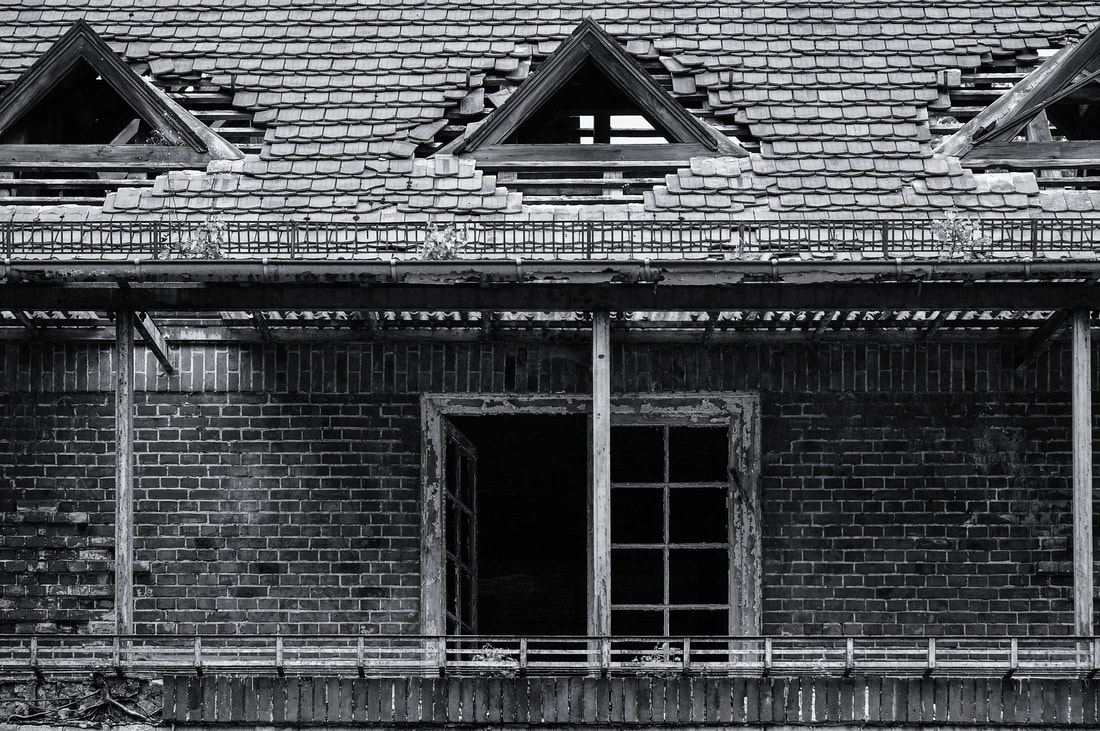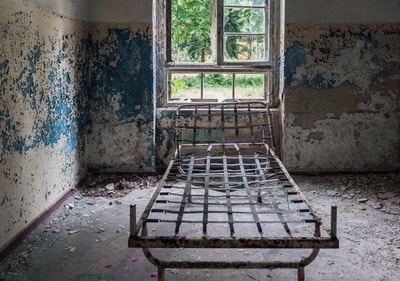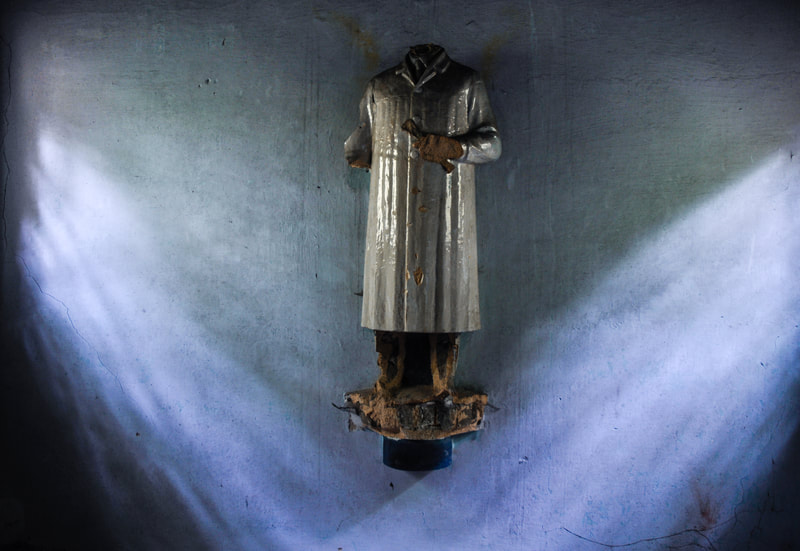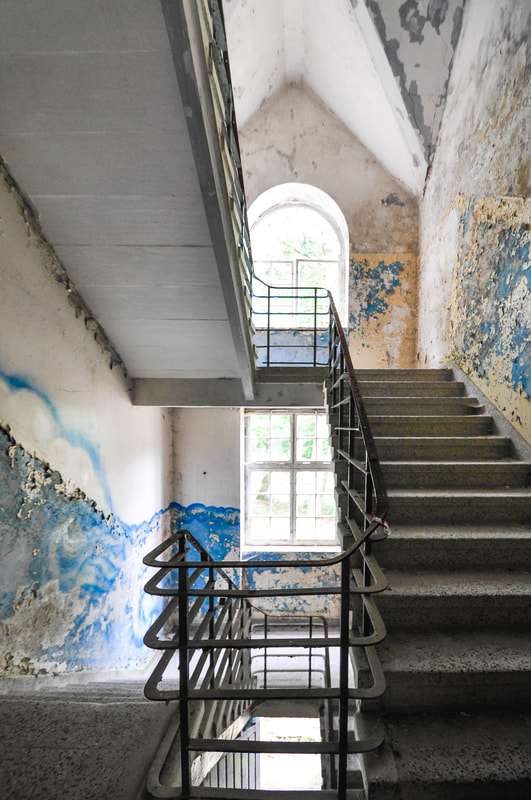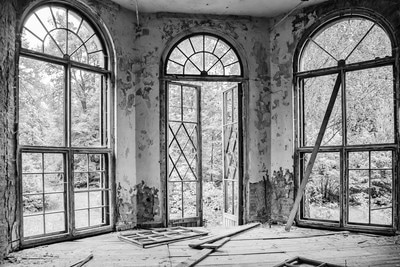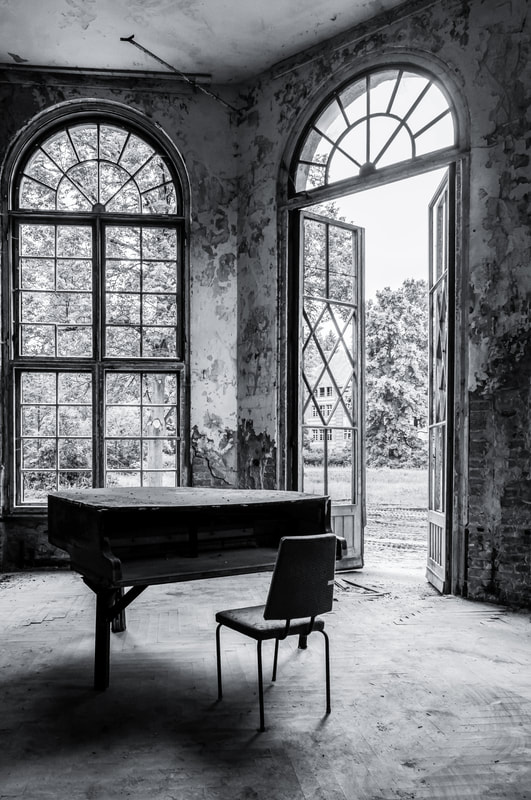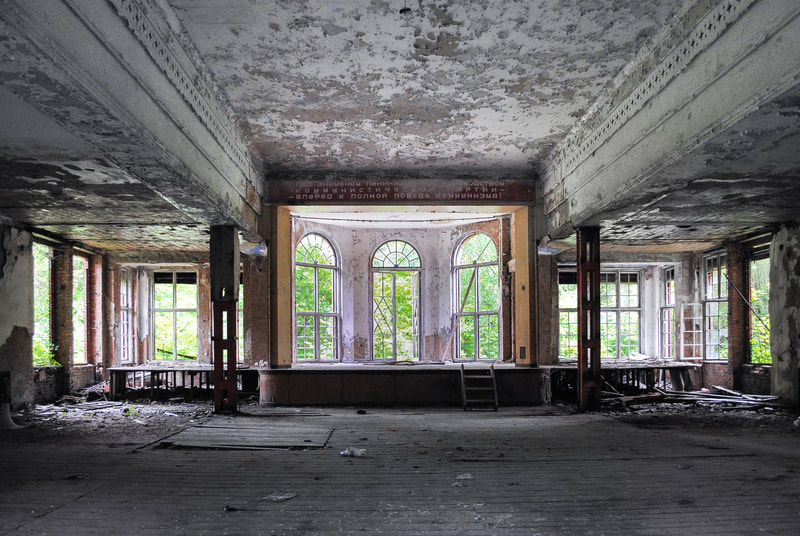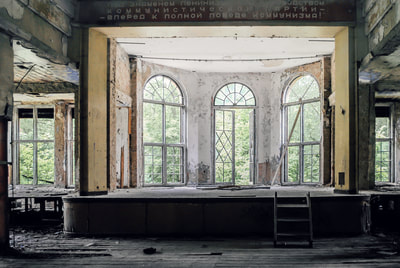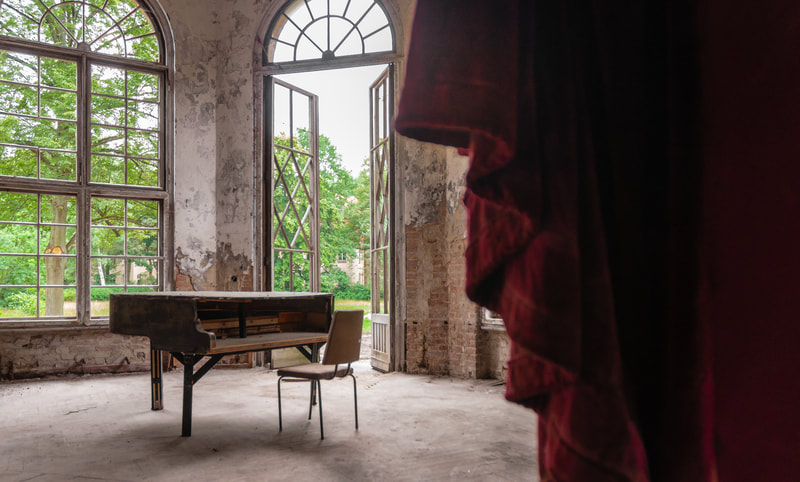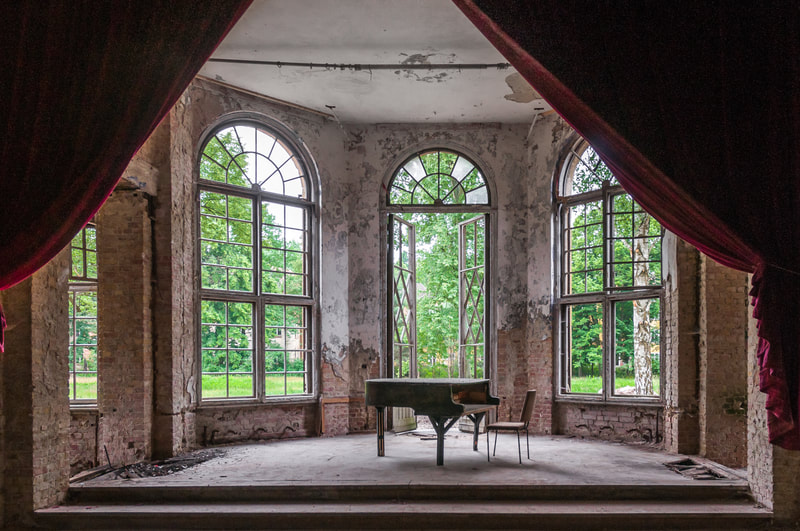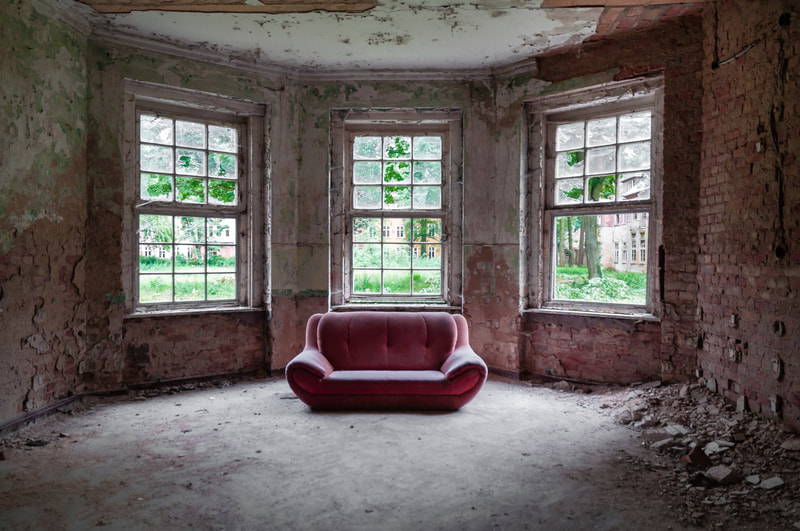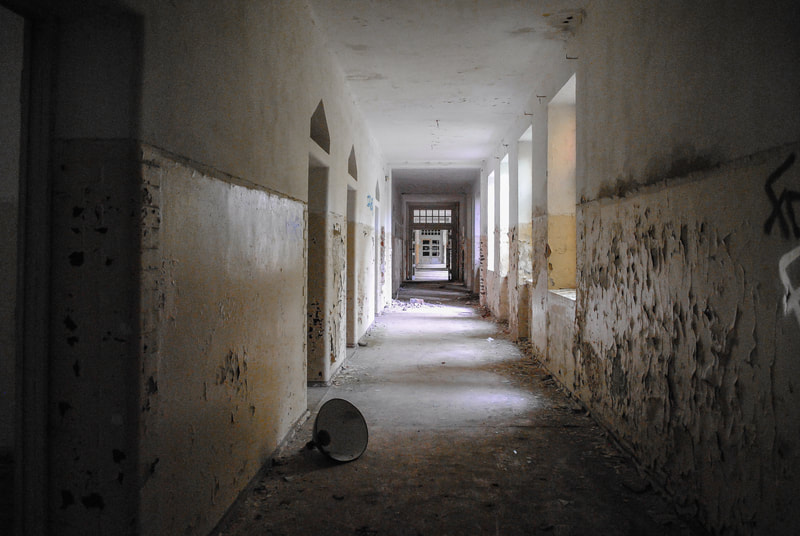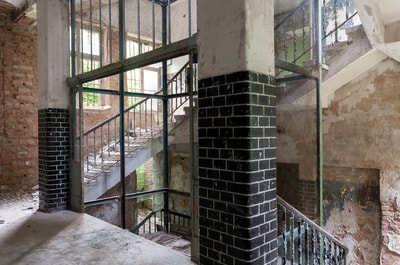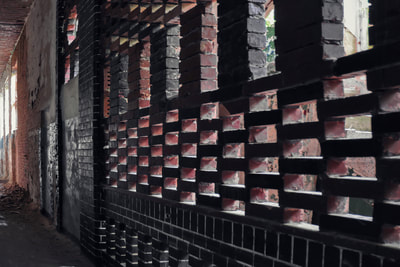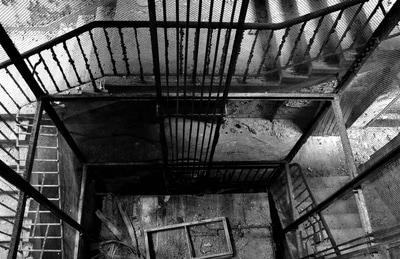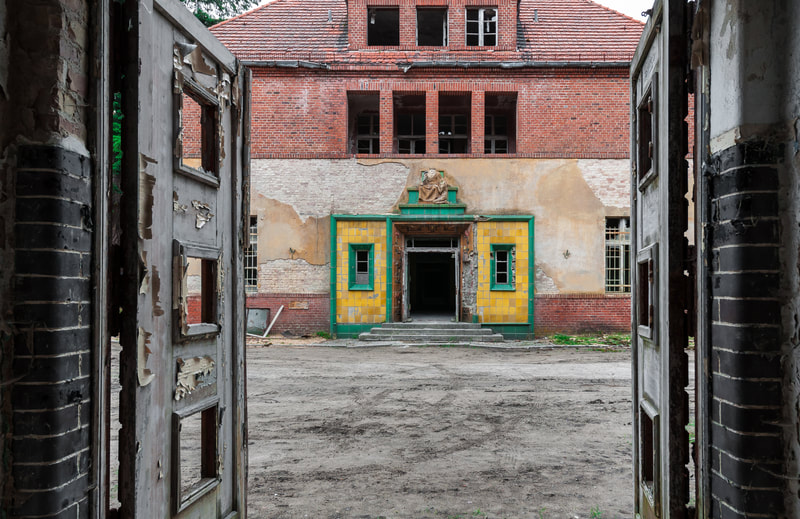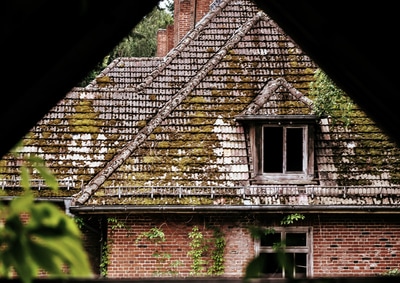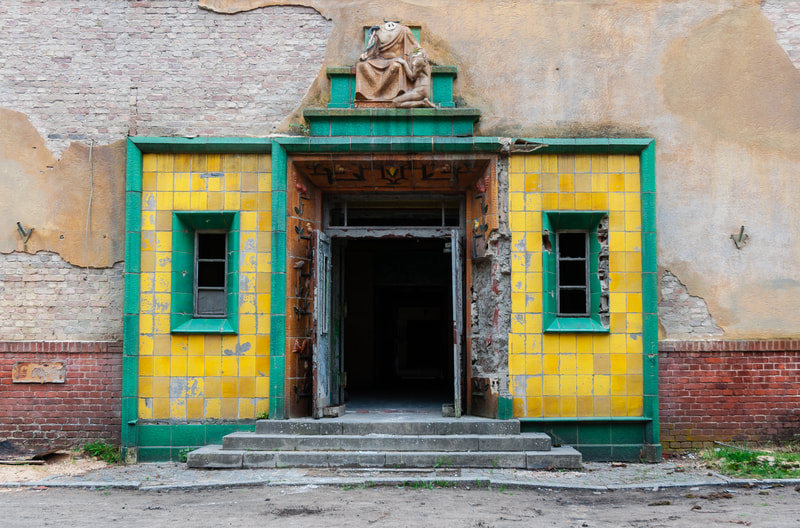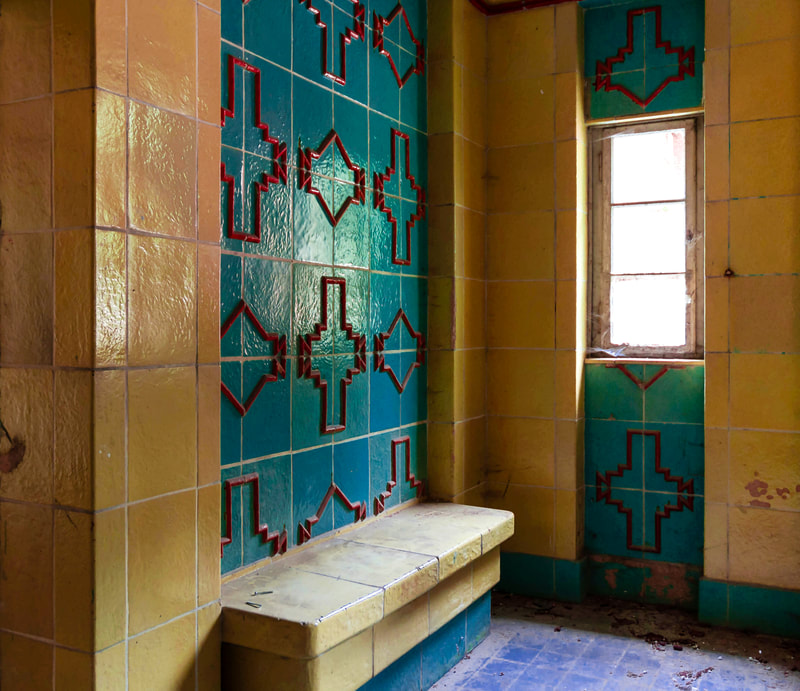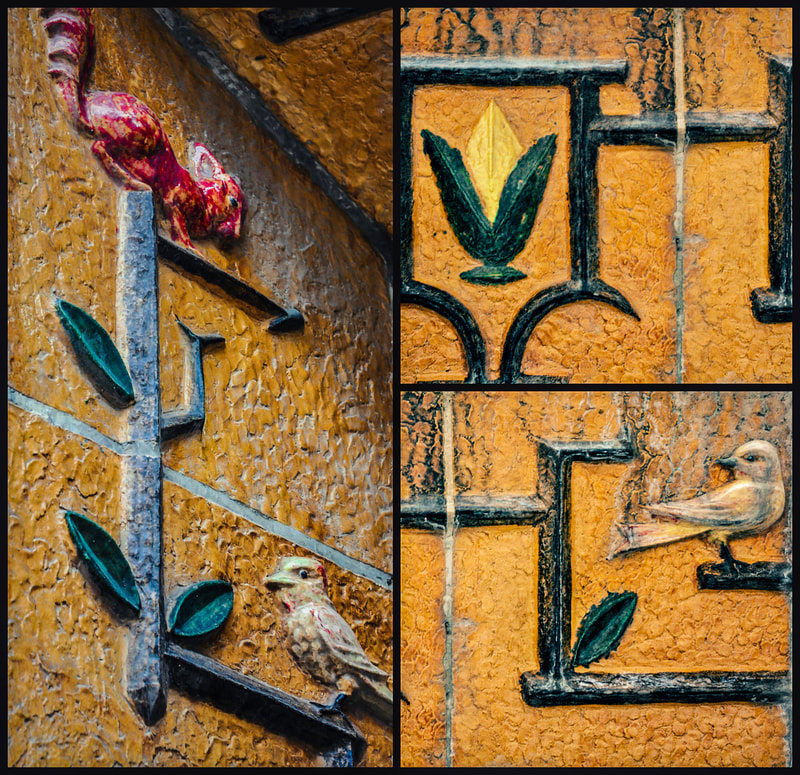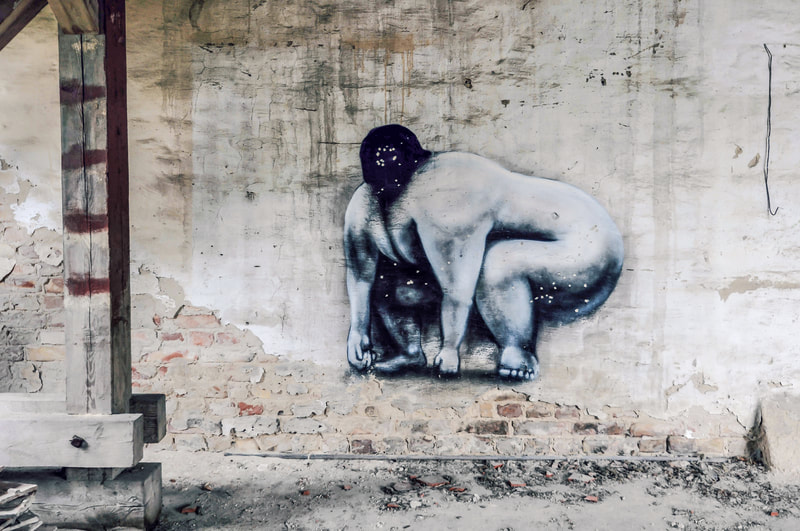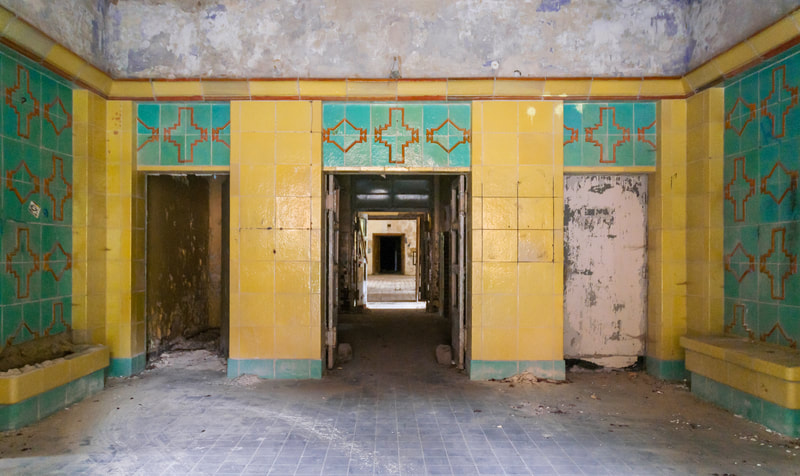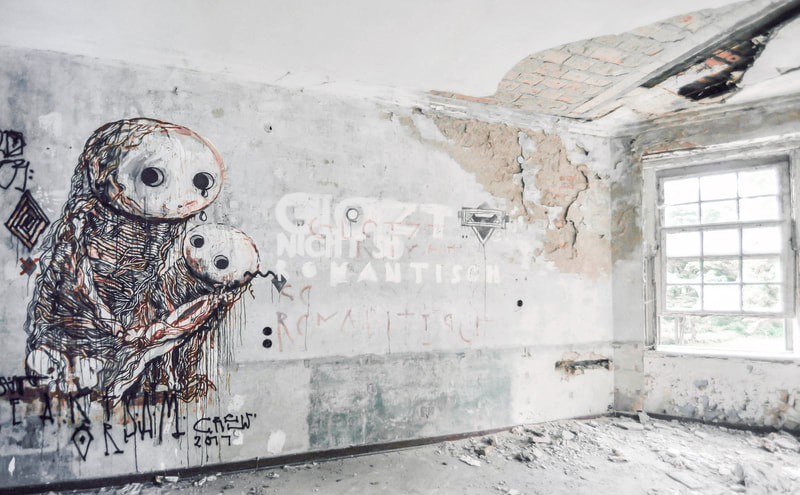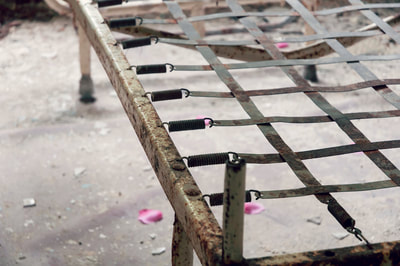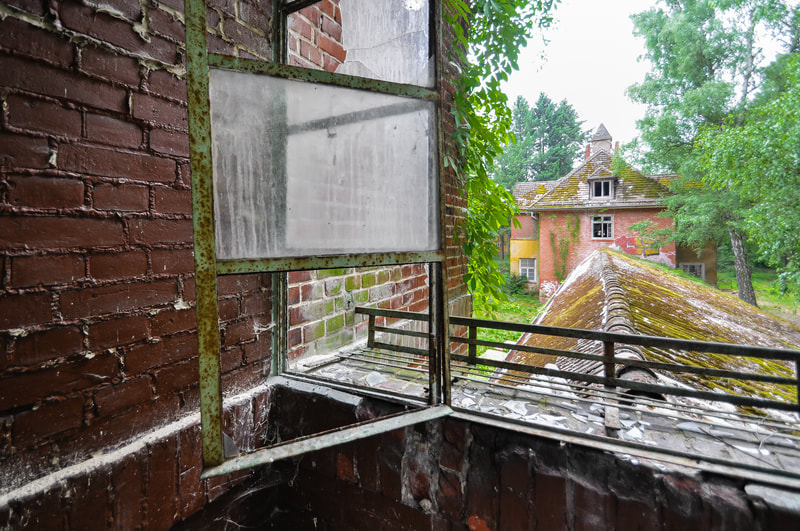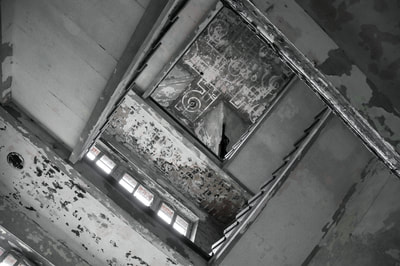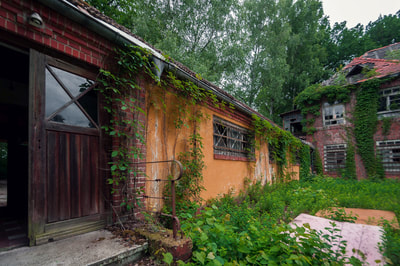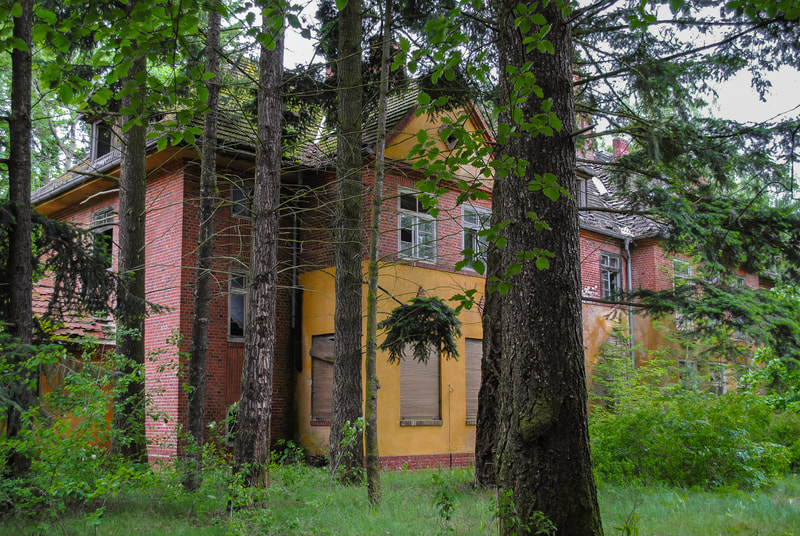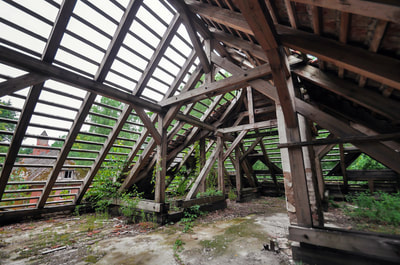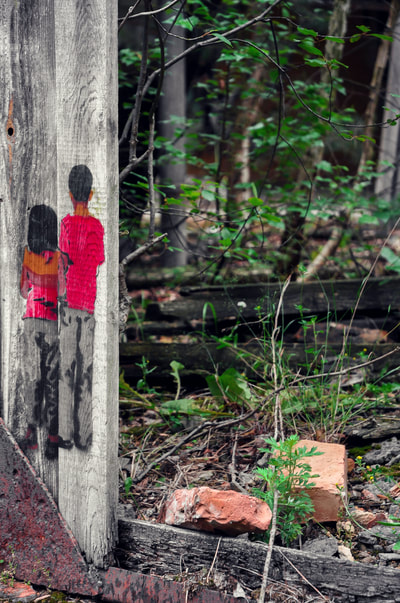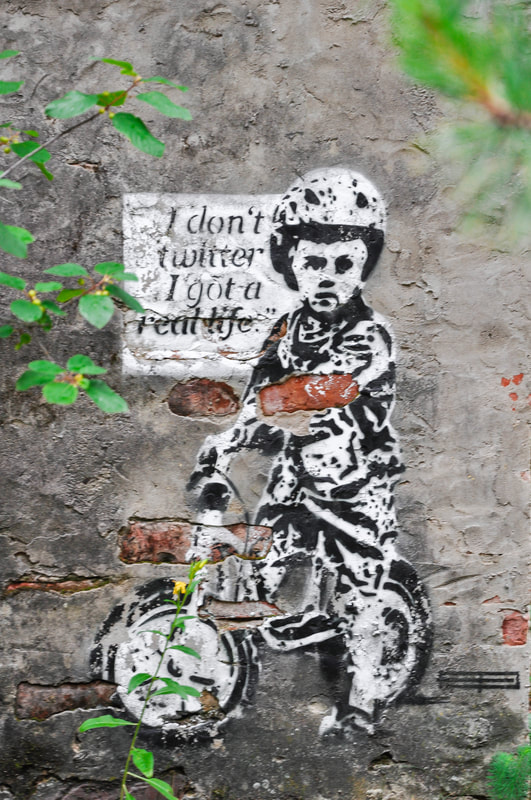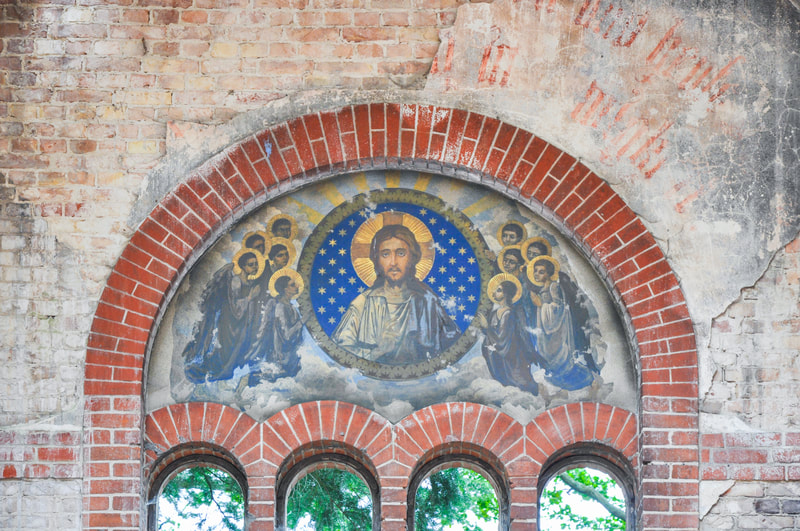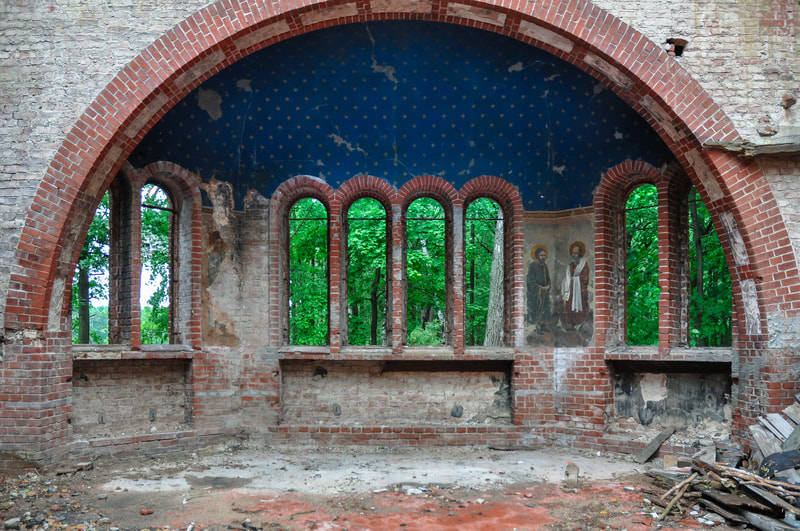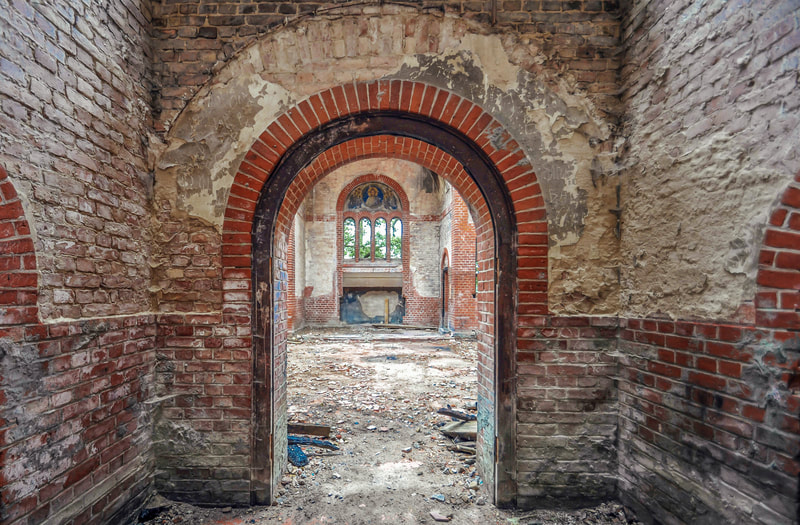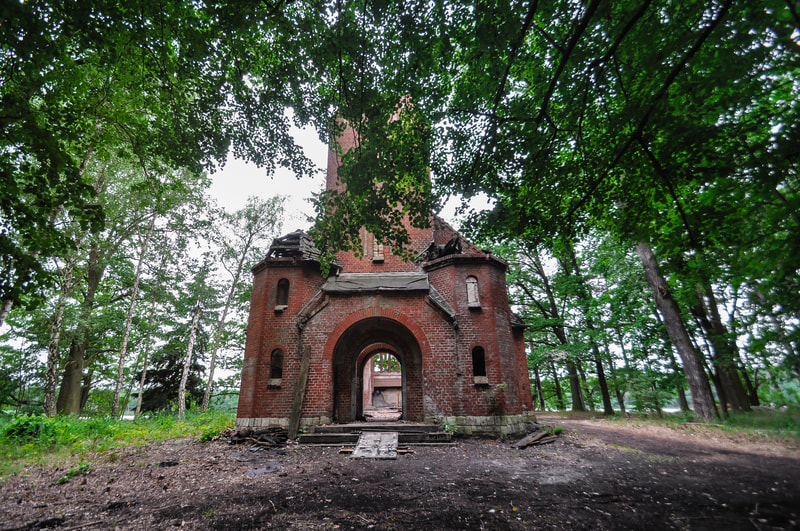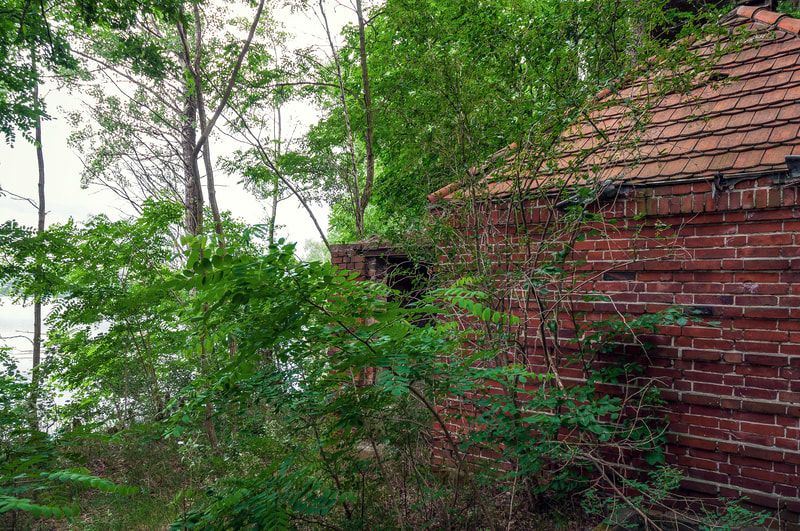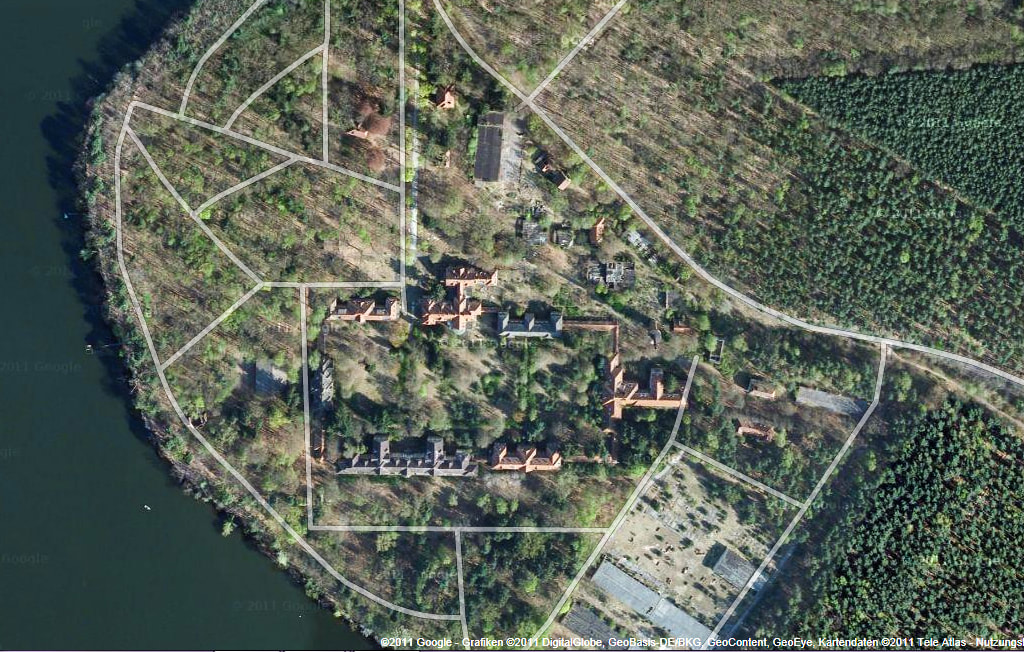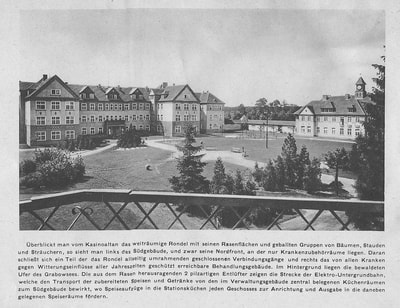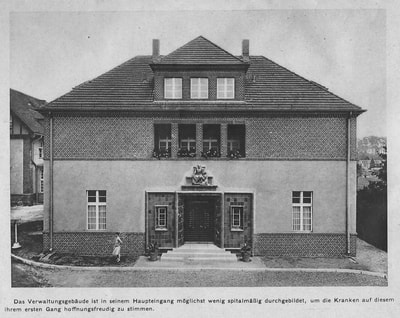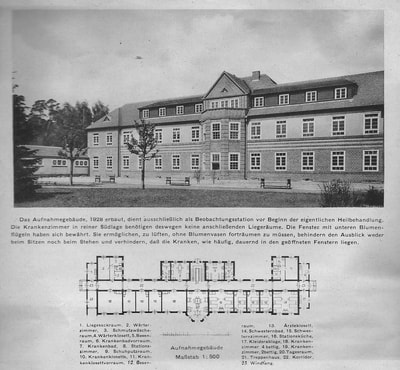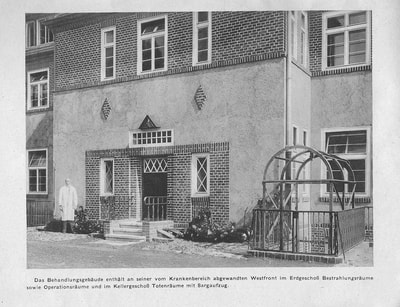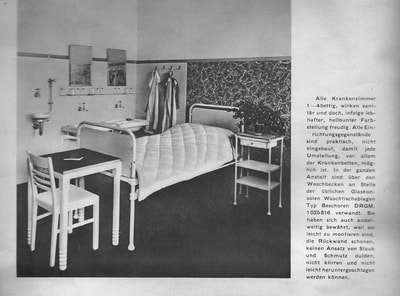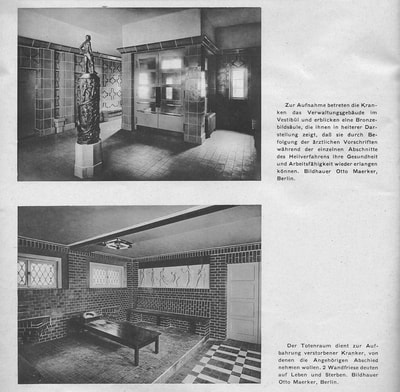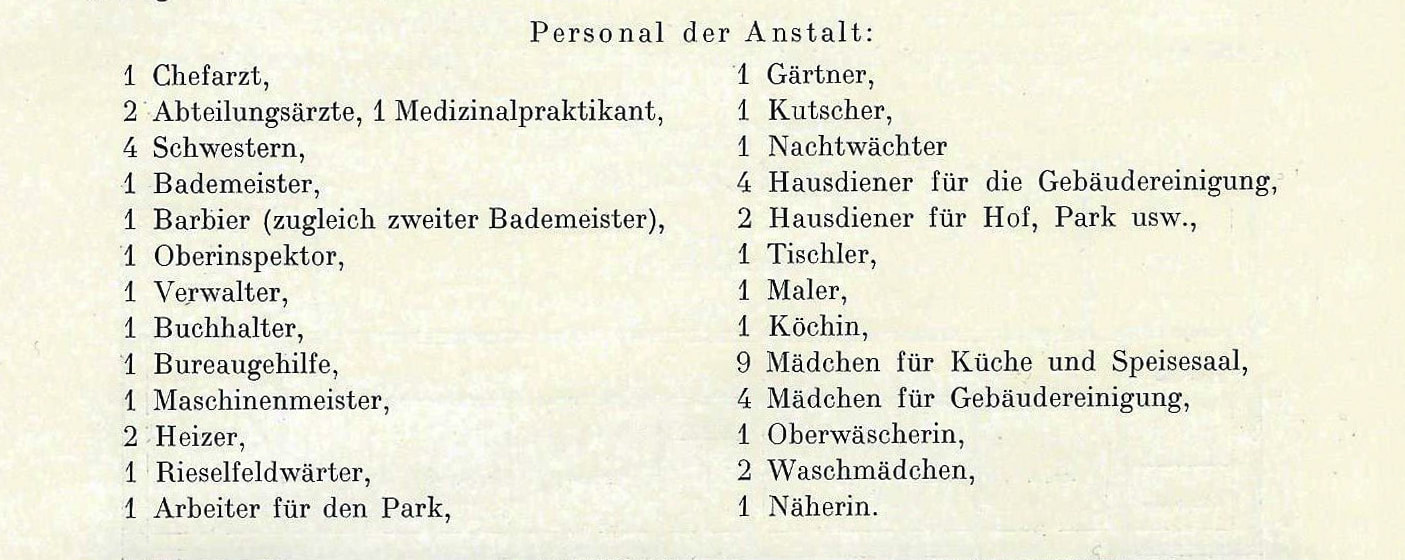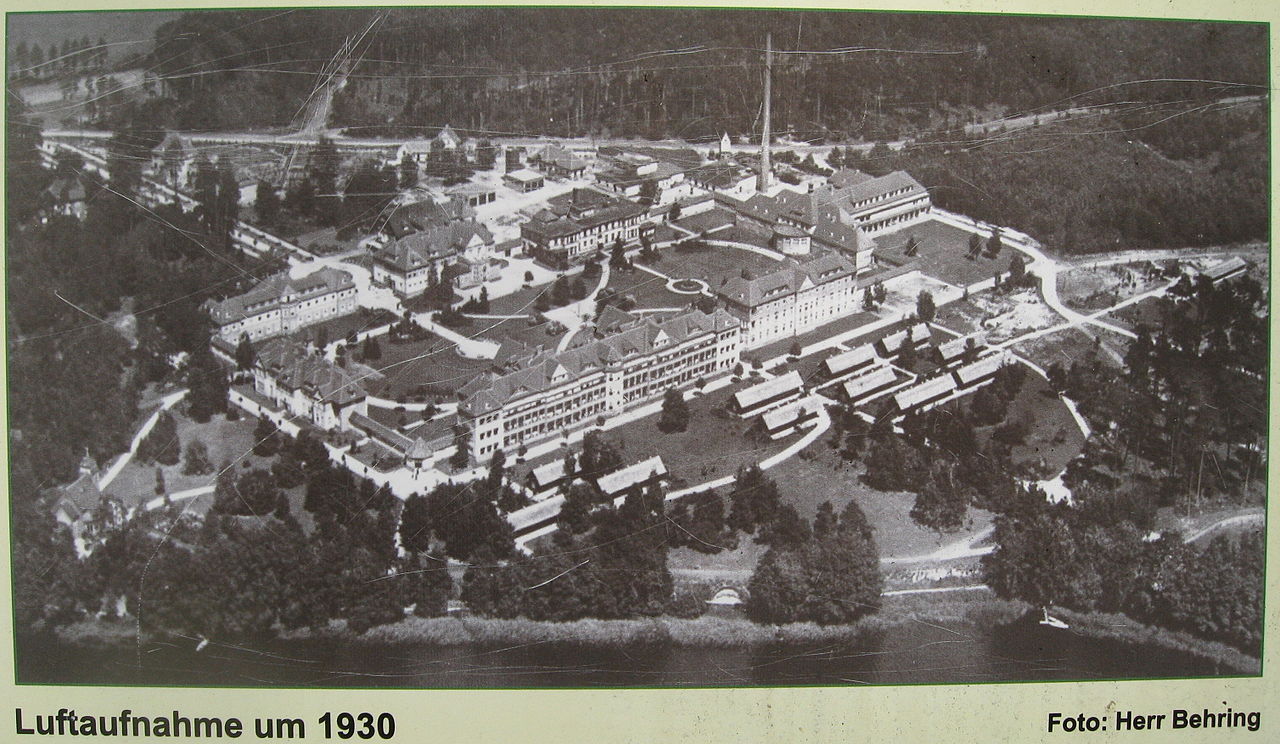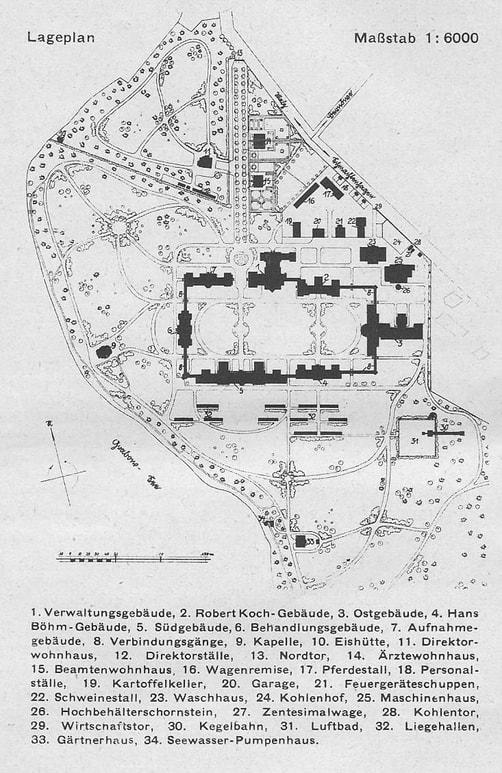Heilstätten am See
"A child said, What is the grass? [...]
And now it seems to me the beautiful uncut hair of graves.
[...] All goes onward and outward
and nothing collapses."
(Walt Whitman, "A child said, What is the grass?")
And now it seems to me the beautiful uncut hair of graves.
[...] All goes onward and outward
and nothing collapses."
(Walt Whitman, "A child said, What is the grass?")
Die alten TBC-Heilstätten in Ostdeutschland entstanden als eine der zahlreichen Anlagen, die im Kampf gegen die grassierende Tuberkulose erbaut wurden, um die Jahrhundertwende. Die Heilstätten, die vom Roten Kreuz gegründet wurden, dienten zuerst als reine Versuchsheilstätte. Denn bis dato war nicht klar, ob Lungenkranke auch jenseits des Mittelmeerklimas oder an frischer Gebirgsluft erfolgreich geheilt werden konnten.
Sowohl im Ersten als auch im Zweiten Weltkrieg diente die Anlage auch immer wieder als Lazarett für verwundete Soldaten. In der Zeit nach dem Zweiten Weltkrieg und nach der Entdeckung des Penicillins waren längere Sanatoriumsaufenthalte jedoch nicht mehr nötig und so wurde das weitläufige Areal allmählich anderweitig genutzt, zuletzt von den sowjetischen Besatzern, die die Gebäude ab '45 als Kaserne nutzten.
Seit dem Jahr 1995, als die sowjetischen Truppen das Areal verließen, sind die Heilstätten ungenutzt und dienen nur gelegentlich als Kulisse für diverse Filmaufnahmen. Neue Nutzungskonzepte gibt es bereits. Ob sich diese umsetzten lassen wird die Zukunft zeigen.
Lange geht es durch zum Teil recht unwegsames Gelände mitten durch den Wald. Buchstäblich immer weiter hinein ins Nirgendwo. Zwei Besuche führten uns bisher zu den alten Heilstätten. Bei unserem zweiten Besuch (2013) verpassten wir auf dem Gelände nur knapp George Clooney, der am Vortag noch wegen Filmdreharbeiten auf dem Gelände anzutreffen war. Für ein Autogramm kamen wir also leider knapp zu spät. Aufgrund der Dreharbeiten war das Areal recht stark abgeholzt und erschien bei Weitem übersichtlicher als während unseres ersten Besuchs (2010), an dem wir uns regelrecht durchs Unterholz schlagen musste und dazu schnell zu einem wehrlosen Opfer der allgegenwärtigen Mückenplage wurden.
Sowohl im Ersten als auch im Zweiten Weltkrieg diente die Anlage auch immer wieder als Lazarett für verwundete Soldaten. In der Zeit nach dem Zweiten Weltkrieg und nach der Entdeckung des Penicillins waren längere Sanatoriumsaufenthalte jedoch nicht mehr nötig und so wurde das weitläufige Areal allmählich anderweitig genutzt, zuletzt von den sowjetischen Besatzern, die die Gebäude ab '45 als Kaserne nutzten.
Seit dem Jahr 1995, als die sowjetischen Truppen das Areal verließen, sind die Heilstätten ungenutzt und dienen nur gelegentlich als Kulisse für diverse Filmaufnahmen. Neue Nutzungskonzepte gibt es bereits. Ob sich diese umsetzten lassen wird die Zukunft zeigen.
Lange geht es durch zum Teil recht unwegsames Gelände mitten durch den Wald. Buchstäblich immer weiter hinein ins Nirgendwo. Zwei Besuche führten uns bisher zu den alten Heilstätten. Bei unserem zweiten Besuch (2013) verpassten wir auf dem Gelände nur knapp George Clooney, der am Vortag noch wegen Filmdreharbeiten auf dem Gelände anzutreffen war. Für ein Autogramm kamen wir also leider knapp zu spät. Aufgrund der Dreharbeiten war das Areal recht stark abgeholzt und erschien bei Weitem übersichtlicher als während unseres ersten Besuchs (2010), an dem wir uns regelrecht durchs Unterholz schlagen musste und dazu schnell zu einem wehrlosen Opfer der allgegenwärtigen Mückenplage wurden.
The old TBC-sanatorium in the East of Germany was built around the turn of the century in order to fight the rampant tuberculosis epidemic. It was one of many similar institutions of this time. The German Red Cross was the founder of this sanatorium that initially was only established to learn if it would be possible to heal people without the healing effects of the Mediterranean climate or fresh mountain air.
During the two World Wars the sanatorium was used as a military hospital for wounded soldiers. After WW II. and after the discovery of penicillin longer stays weren't necessary anymore. Due to this fact the area wasn't only used for medical purposes. Lastly (after WW II. in '45) the buildings were mainly used as military barracks by the Soviet occupiers.
The grounds have been abandoned since the year 1995 after the Soviet troops left Germany. Occasionally, the area is used as scenery for movies of all kinds. A new use concept has already been elaborated, but the future of the sanatorium is still uncertain.
During our second visit (2013), we missed the opportunity of meeting the actor George Clooney by only one day, as he was still on the grounds a day before we took our photos, as the sanatorium grounds were used as filming location for one of his films. Unfortunately, no autographs for us that day. Due to the shooting on the grounds, trees were cut ant the area appeared to be very clean. The total opposite to our first visit (2010), when we had to fight our way through the thick thicket and thus also became the victims of myriads of mosquitos easily.
During the two World Wars the sanatorium was used as a military hospital for wounded soldiers. After WW II. and after the discovery of penicillin longer stays weren't necessary anymore. Due to this fact the area wasn't only used for medical purposes. Lastly (after WW II. in '45) the buildings were mainly used as military barracks by the Soviet occupiers.
The grounds have been abandoned since the year 1995 after the Soviet troops left Germany. Occasionally, the area is used as scenery for movies of all kinds. A new use concept has already been elaborated, but the future of the sanatorium is still uncertain.
During our second visit (2013), we missed the opportunity of meeting the actor George Clooney by only one day, as he was still on the grounds a day before we took our photos, as the sanatorium grounds were used as filming location for one of his films. Unfortunately, no autographs for us that day. Due to the shooting on the grounds, trees were cut ant the area appeared to be very clean. The total opposite to our first visit (2010), when we had to fight our way through the thick thicket and thus also became the victims of myriads of mosquitos easily.
Satellitenaufnahme, 2011 - Aerial Image, 2011
(©google-earth, 2011)
Historische Aufnahmen, ca. 1929 - Historical photos, approx. 1929
(©Bauwelt, Berlin SW68, Heft 49, 5.Dez. 1929, Privatbesitz)
Anstaltspersonal 1911 - Staff anno 1911
(Nietner, Johannes: Deutsche Lungenheilstätten in Wort und Bild. Part II. Berlin: Marhold-Verlag 1913, S. 13.)
Luftaufnahme (1930) - Aerial view (1930)
(©Behring - CC BY-SA 3.0)
Lageplan - Map
(©Bauwelt, Berlin SW68, Heft 49, 5.Dez. 1929)
Postkarte von 1911 - Postcard from 1911
(in the public domain)
